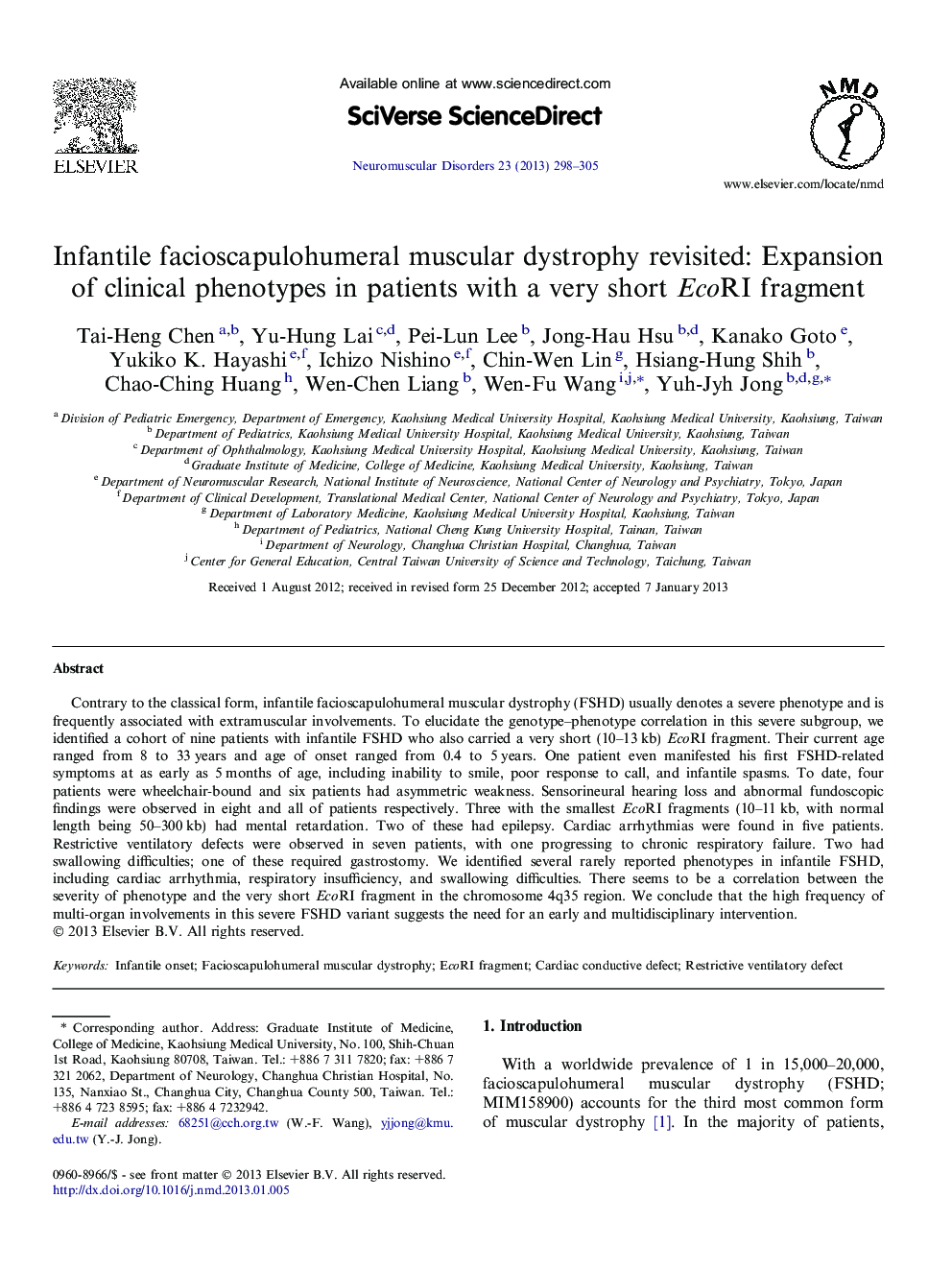| Article ID | Journal | Published Year | Pages | File Type |
|---|---|---|---|---|
| 6041827 | Neuromuscular Disorders | 2013 | 8 Pages |
Abstract
Contrary to the classical form, infantile facioscapulohumeral muscular dystrophy (FSHD) usually denotes a severe phenotype and is frequently associated with extramuscular involvements. To elucidate the genotype-phenotype correlation in this severe subgroup, we identified a cohort of nine patients with infantile FSHD who also carried a very short (10-13Â kb) EcoRI fragment. Their current age ranged from 8 to 33Â years and age of onset ranged from 0.4 to 5Â years. One patient even manifested his first FSHD-related symptoms at as early as 5Â months of age, including inability to smile, poor response to call, and infantile spasms. To date, four patients were wheelchair-bound and six patients had asymmetric weakness. Sensorineural hearing loss and abnormal fundoscopic findings were observed in eight and all of patients respectively. Three with the smallest EcoRI fragments (10-11Â kb, with normal length being 50-300Â kb) had mental retardation. Two of these had epilepsy. Cardiac arrhythmias were found in five patients. Restrictive ventilatory defects were observed in seven patients, with one progressing to chronic respiratory failure. Two had swallowing difficulties; one of these required gastrostomy. We identified several rarely reported phenotypes in infantile FSHD, including cardiac arrhythmia, respiratory insufficiency, and swallowing difficulties. There seems to be a correlation between the severity of phenotype and the very short EcoRI fragment in the chromosome 4q35 region. We conclude that the high frequency of multi-organ involvements in this severe FSHD variant suggests the need for an early and multidisciplinary intervention.
Related Topics
Life Sciences
Neuroscience
Developmental Neuroscience
Authors
Tai-Heng Chen, Yu-Hung Lai, Pei-Lun Lee, Jong-Hau Hsu, Kanako Goto, Yukiko K. Hayashi, Ichizo Nishino, Chin-Wen Lin, Hsiang-Hung Shih, Chao-Ching Huang, Wen-Chen Liang, Wen-Fu Wang, Yuh-Jyh Jong,
